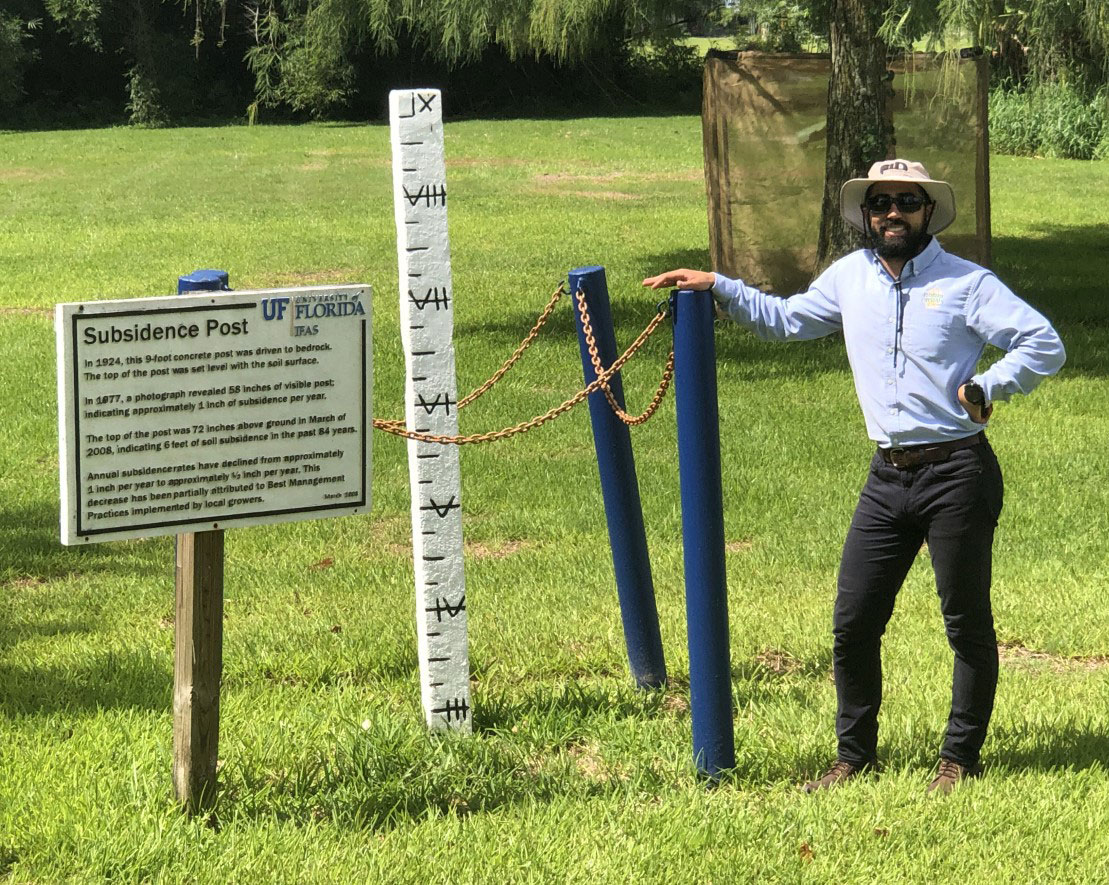 Daniel Cavazos shares concrete evidence of subsidence in the EAA
Daniel Cavazos shares concrete evidence of subsidence in the EAA
Aug 17, 2022
BELLE GLADE, FL – USA Rice was in the Florida rice production region in the Everglades Agricultural Area (EAA) this week where 24,000 acres of rice is produced each year. USA Rice staff attended the University of Florida Institute of Food and Agricultural Science (UF/IFAS) Florida Rice Field Day on Tuesday, and visited production fields and participated in a Q&A session with Florida Crystals, the largest rice producer in the region, on Wednesday.
The field day had excellent attendance with more than 50 participants. The program started with a welcome at the UF/IFAS Everglades Research and Extension Center, then the group traveled to an off-station research site at Florida Crystals where UF/IFAS scientists talked about the agronomic benefits of rice production and insect control.
Back at the station research area, the agenda included several presentations on weed management.
After a lunch, sponsored by the Florida Rice Growers Inc., Steve Linscombe, director of The Rice Foundation, gave an overview of USA Rice sustainability efforts, and also discussed his previous work in rice variety development during his 35-year career with the Louisiana State University AgCenter at the Crowley Rice Research Station.
Next up was an outstanding series of presentations by four graduate students on their research at the station. Additional reports on the Florida rice variety evaluation program and rice diseases were followed by a lively Q&A session that covered a wide range of topics.
On Wednesday, USA Rice staff met with Daniel Cavazos, director of organic and rice production for Florida Crystals, to tour the company’s rice fields, composting facility, and the Sem-Chi rice mill which is adjacent to the farm’s headquarters. Cavazos is a member of the 2022-24 Rice Leadership Development Class and has recently completed Sessions I & II of the program.
Rice production in the EAA is unique in the United States. Primarily a sugarcane production area, rice is grown in the fallow year coming out of ratoon cane before planting plant cane. This production takes place largely on muck soils containing more than 70-80 percent organic matter. The muck soils present unique advantages, such as fertility, and unique challenges as well.
One major challenge is the subsidence rate. The EAA was formerly a wetland and once drained, the muck soils began to rapidly decompose. This increased rate of soil decomposition leads to subsidence, or the gradual caving in or sinking of the land.
When the Everglades Research and Extension Center was established in 1924, a concrete subsidence pole was buried at soil level nine feet through the muck to the limestone bedrock. Today that pole is over six feet above the soil level which dramatically illustrates the subsidence level in this unique agricultural region.